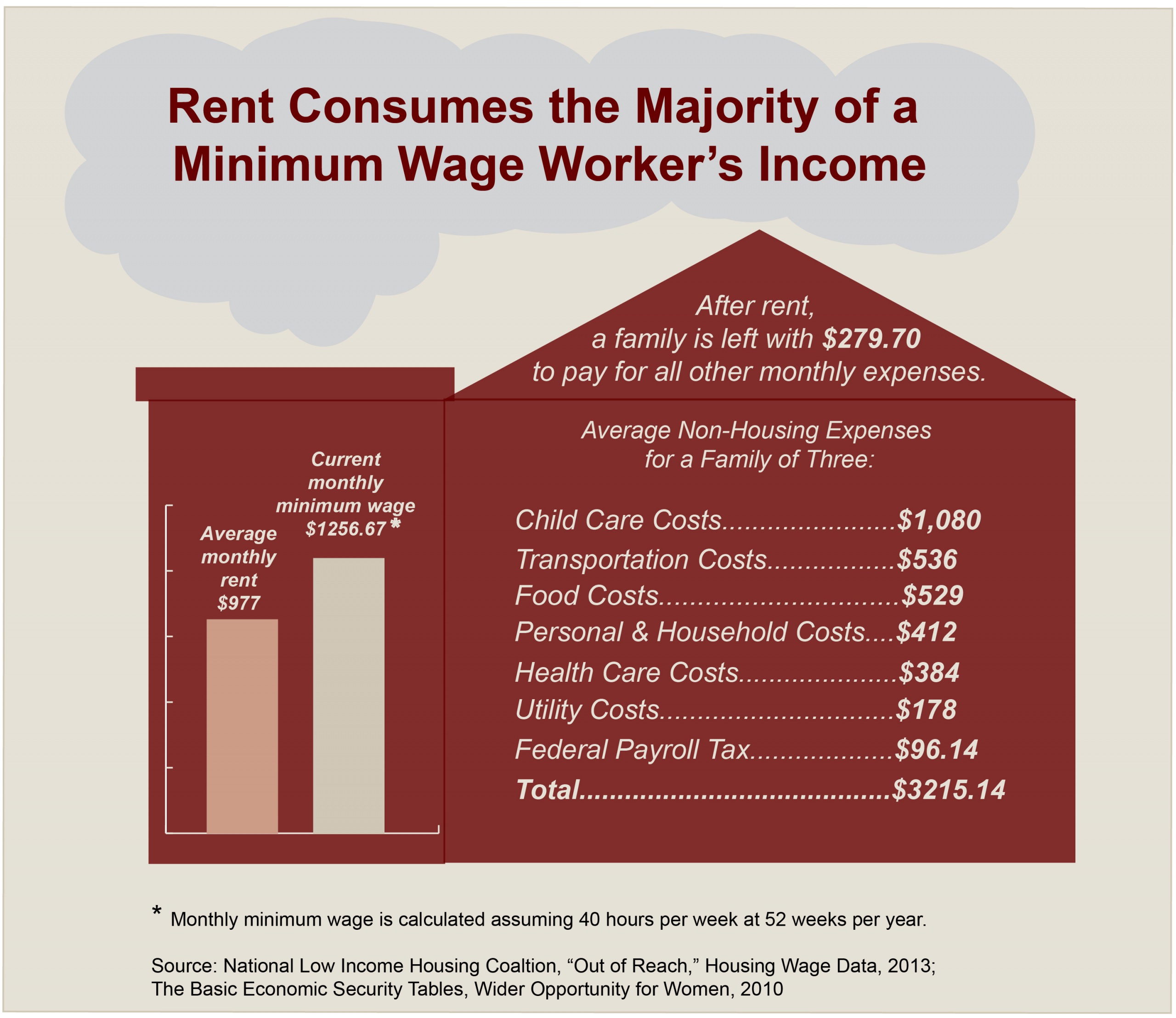With Rent this High and Wages this Low, How Can a Family Survive?
By Lavanya Mohan and Elizabeth Lower-Basch
A recent report by the National Low Income Housing Coalition (NLIHC) shows the wide gap between wages and housing costs across the country. Although minimum wage remains at $7.25/hour, a full-time worker must earn, on average, $18.79/hour to afford a two-bedroom apartment. At the current minimum wage, a single earner must work 104 hours per week to afford average rental costs (housing is considered affordable if a family spends no more than 30 percent of their monthly income on rent).
As the below infographic shows, a family with a minimum wage does not have enough income left over after paying rent to cover basic necessities such as food, transportation, and child care costs. The total income needed to fulfill these fundamental needs each month is almost three times a monthly minimum wage salary. The value of the minimum wage has eroded greatly over time. If the 1968 minimum wage had kept up with inflation, it would now be worth $10.69 today.
The average wage needed to afford rent ranges across states from $10.41 to $32.14, and even in the lowest-cost states, rents consume a disproportionate share of low-wage workers’ earnings. Some states have implemented minimum wages higher than the federal minimum wage. However, these higher minimum wages still fall short of the average wages needed to afford state housing costs.
|
As these charts show, poor families cannot afford current housing and living costs. That is why CLASP supports an increase in the minimum wage, as well as advocating for effective income and work support programs. |

